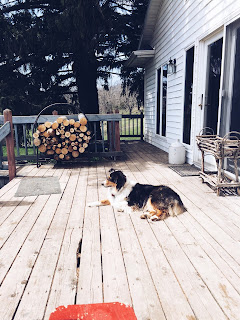We do a lot of stories about our goats and kids, sheep and lambs, and cow and calf. It is time to tell you about our chickens.
 |
| This is how the pasture looks after the chickens have done their eating! |
Dreamfarm has been raising chickens for many years. We started our first year with a small flock of 25, and slowly added more over the years. One season we had over 400, that was too many. We have settled on 250 as a number that is manageable, as far as human work involved and the land that they need to be on pasture. For the first 11 years on our current farm, we had the chicken housings in the valley. It worked well until about 3 years ago when the chickens had pretty much eroded the area and it needed a rest. Last season we moved them to our sheep pasture. It was a nice spot as the houses were under big old oaks and provided shade for the birds but the pasture has a sandy base, and it did not take long for that land to also get eroded. This year we moved them to our alfalfa pasture. Alfalfa is good for about 3-4 years, then it needs to be planted in something other than alfalfa for a season due to something called alfalfa toxicity. So we decided to put the chickens on this field to eat the remaining plantings and leave some good manure. This fall we will rototill the field and plant it in winter rye. Next spring the rye will be tilled back into the soil for a green manure, than planted in a new seeding alfalfa. This field will then
be harvested as hay for our livestock.
 |
| Ah, life is great with this new pasture to eat! |
We will use this pasture all season. After the chickens harvest an area, we move the house and portable fencing to a new section. To accomplish this, we get all the chickens to go into the housing and close up the little chicken door. A hand-truck is placed at each end of the house and, with some strength, is moved a length to a new pasture. The chickens move along with the house. The portable fencing is gathered from the old section and moved to the new section. Once all is in place, the little chicken door is opened and the chickens are greeted with new pasture. We do this for all 5 houses.

We raise a variety of breeds. This gives us a variety of colors in the egg shells, which gives a beautiful display when placed in the egg carton. The color of the eggs has no reflection in the quality of the egg. It is what the chickens eat that makes the egg more nutritional. Our chickens are fed certified organic non-soy grain along with their bountiful pasture. The yolks are a deep yellow, the whites are firm, the shells are strong. Our chickens are happy.
You can find our certified organic, free range eggs at the Westside Community Market (DOT parking lot) on Saturday mornings. We also have our cheese available.
By the way, we still have cheese shares available, check our website at www.dreamfarm.biz










